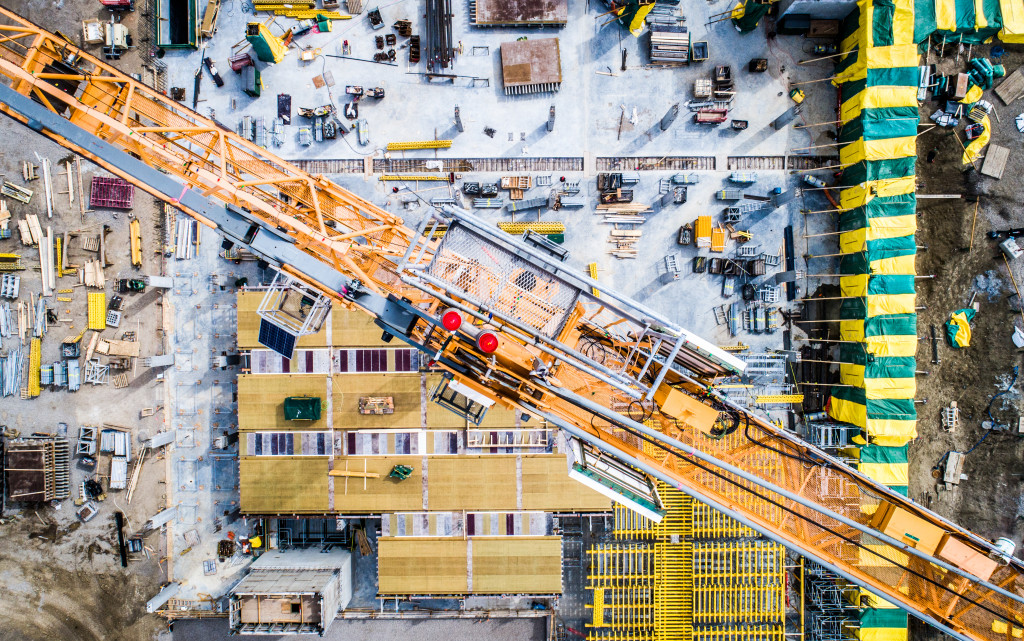• Builders should enforce local safety regulations and provide workers with the necessary training and protective equipment.
• Regular inspections of the construction sites must be carried out to ensure all safety protocols are followed.
• Clear signage should be implemented to ensure passersby know about potential risks associated with the project.
• Builders should communicate with the local community to inform them of any changes or potential hazards associated with the project.
Construction is an important part of any community. It creates jobs and can be a great way to improve the infrastructure of a neighborhood. At the same time, construction sites can also be dangerous places, so safety protocols must be in place to ensure everyone remains safe. Here’s how builders and community members can work together to keep construction sites safe.
Enforcing Safety Regulations
Safety regulations help keep everyone on a construction site safe, from workers to passersby. Builders should ensure they are aware of all local safety laws and regulations and adhere to them at all times. This includes ensuring workers have the right safety equipment, such as hard hats, goggles, and protective clothing. It also means controlling noise levels and limiting access to areas where hazardous materials are stored or used.
To enforce safety regulations, you should follow the following:
Safety and Health Plan
Create a comprehensive safety and health plan that outlines all the regulations you must follow. This should include policies for personal protective equipment, hazardous material storage, and other safety protocols. For instance, the plan should include the use of safety harnesses and lanyards when working on elevated platforms. Or, you should limit access to areas with potential hazards, such as flammable liquids.
Regular Inspections
Regular inspections of the construction site are essential for keeping everyone safe. Inspectors should ensure all safety protocols are followed and that safety equipment is properly functioning. They should also check for potential hazards, such as loose materials or hazardous waste.

Training Workers Properly
Construction is inherently risky, so workers must be properly trained and equipped with the right tools before beginning work on-site. You should provide ongoing training to their staff. Hence, workers know how to handle any potential risks safely and efficiently without compromising their safety or that of others around them. This could include working at heights or safely operating heavy machinery.
It would help if you arranged for them to take the CITB safety test, which tests their knowledge of construction safety standards and procedures. The tests also ensure that anyone working on the site understands health and safety regulations and how to minimize the risks for themselves and those around them.
Creating Clear Signage
Construction sites can be confusing, so creating clear signage outlines safety protocols helps. This should include warning signs around areas with potential risks or hazardous materials, such as scaffolding or excavations. It should also include instructions for using protective equipment and other safety regulations that workers must adhere to.
Signages should also be clear to the community members, especially children and other vulnerable individuals. It should be easy to understand and properly visible from the street or other public areas so that everyone knows what risks may be present on the site.
Check Equipment
It is important to check that the equipment being used is in good condition and fit for purpose. Regularly inspect on-site tools and equipment to ensure they are safe and in working order. For instance, if you’re using heavy machinery, make sure they are properly serviced and in good condition. It will also help if a licensed and qualified operator operates them.
Communicating with the Local Community
The people living in the area should be informed about any changes or potential hazards associated with a construction project before work begins. While it may not always be possible to predict every potential hazard or disruption in advance, builders should make an effort to communicate openly with the community about what is happening on their site and when it might affect nearby residents or businesses. This could include increased noise levels during certain hours or temporary road closures due to heavy machinery being used on-site.

You can also implement the following tips to ensure effective communication with the local community:
- Have a dedicated contact person who can address any questions or concerns from nearby residents.
- Hold regular meetings with local stakeholders and provide updates on the project’s progress.
- Create a website where people can get all the necessary information about the project, including safety protocols being followed.
- Make sure to respond quickly and effectively to any concerns or questions.
Construction sites can be dangerous if builders and community members don’t follow proper safety protocols. By enforcing existing safety regulations and communicating openly with those living in the area, you can ensure that everyone remains safe while enjoying the benefits of new construction projects. With proper training for workers and oversight from local authorities, everyone can enjoy a safer construction landscape.


